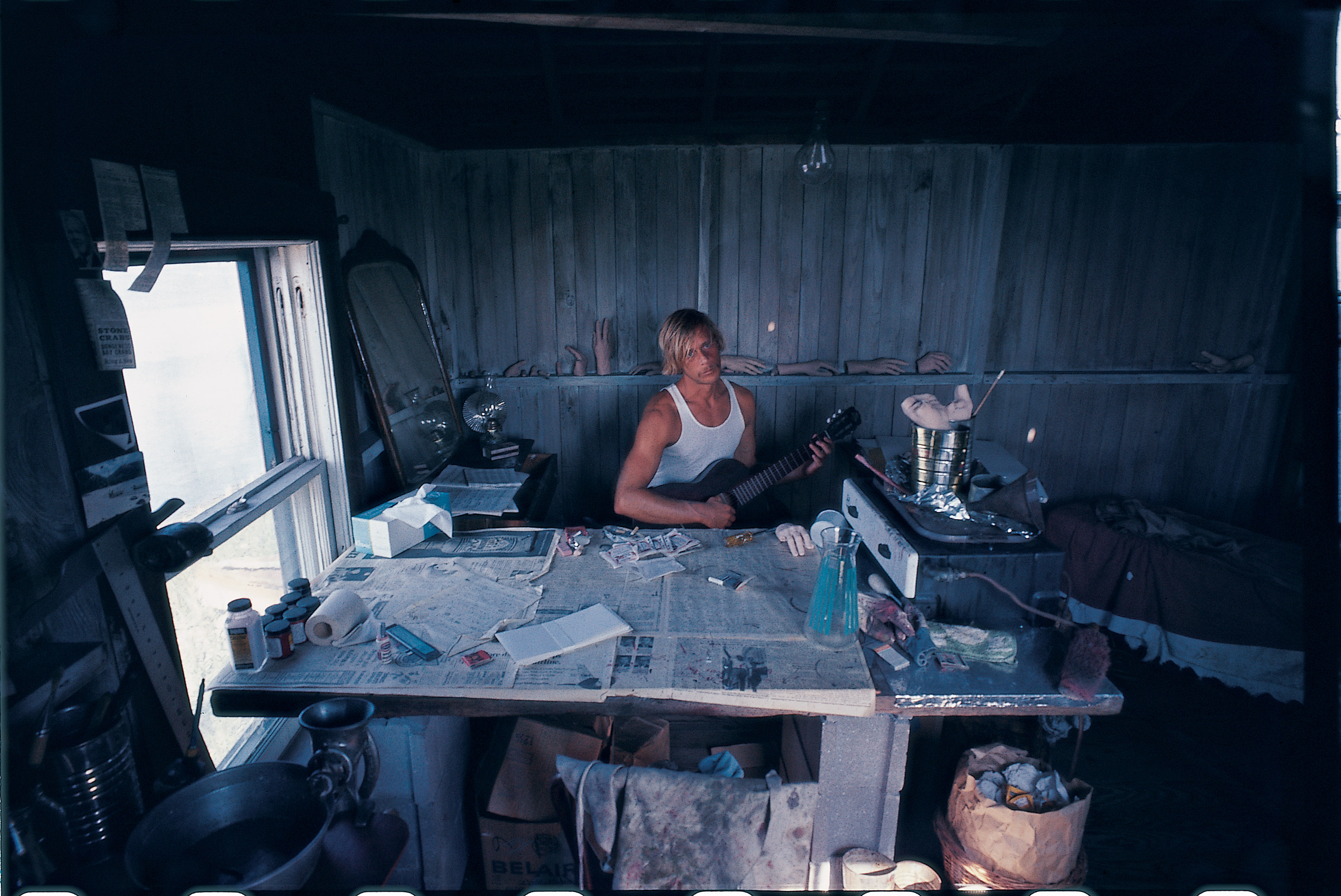Tuesday night at the UCLA Hammer Museum’s Billy Wilder Theater, artist Paul McCarthy spoke about his take on the work of Paul Thek, one of the world’s first installation artists who died 23 years ago from AIDS. The talk was offered in collaboration with the museum’s “Paul Thek: Diver, A Retrospective,” the first U.S. retrospective of the artist’s work.
While Thek was McCarthy’s senior by a little over a decade, a portion of their artistic careers overlapped from the ’60s to the ’80s. Before comparing their works, McCarthy, now 66, addressed what he saw as the more salient themes and visual motifs in Thek’s work: notions of encasement, stacking objects, meat, ephemerality and vividly deconstructed bodies.
Thek’s work ““ for example, his sculptures of alien-looking meat in clear boxes ““ is often seen as a critique of minimalist art’s emptiness. By placing highly realistic, often repulsive-looking slabs of flesh inside objects as banal and easily reproducible as the iconic pop art Brillo box, Thek attempted to metaphorically inject vitality and emotion back into art, one he felt had been lost in the rise of minimalism.
McCarthy showed photos of his own works, many produced in artist collectives in San Francisco, and highlighted parallels between Thek’s work and his own. For example, both approached the idea of a chair as a simultaneously functional and elevated object. In one instance, McCarthy attached an anal plug to make a humorous statement, but in others, the chair became a throne. In one piece, Thek caged a miniature chair inside a tank holding rotten synthetic flesh; at other times, chairs were mask-like implements to be worn around the head.
According to McCarthy, as a young artist, he was fascinated by the idea of transforming himself into a figurehead on the bow of a ship. He achieved this by photographing himself and rotating the image of himself, but if rotated and inverted once more, McCarthy bears striking resemblance to Thek’s paintings of himself as the “Diver.”
Perhaps the most engaging connection occurs between Thek’s piece that is popularly known as “The Dead Hippie” and McCarthy’s “Dreaming,” both created using the artists’ own bodies as casts. While McCarthy said he initially planned to dismember the naked body as part of a performance, he found himself unwilling when the time came. Though McCarthy’s cast was created to stand up (evidenced by gravity’s effect on its anatomy), he left the body lying down on a lawn chair and stacked foam pads beneath so it wouldn’t flatten. McCarthy described his discomfort around this other, replicated self; he even covered it with plastic to avoid seeing it. He said only after randomly dressing it in a shirt did he finally come to see the body as a joke of himself ““ and as an art piece.
Thek’s “The Dead Hippie” piece also shares this morbid artist-as-dead aesthetic, though McCarthy said this similarity between his work and Thek’s was not necessarily intentional.
In spite of several clear intersections between his ideas and Thek’s, McCarthy always deferred to the idea that their works ““ and lives as artists ““ pursued orbits far enough apart to dismiss suspicions of imitation.
